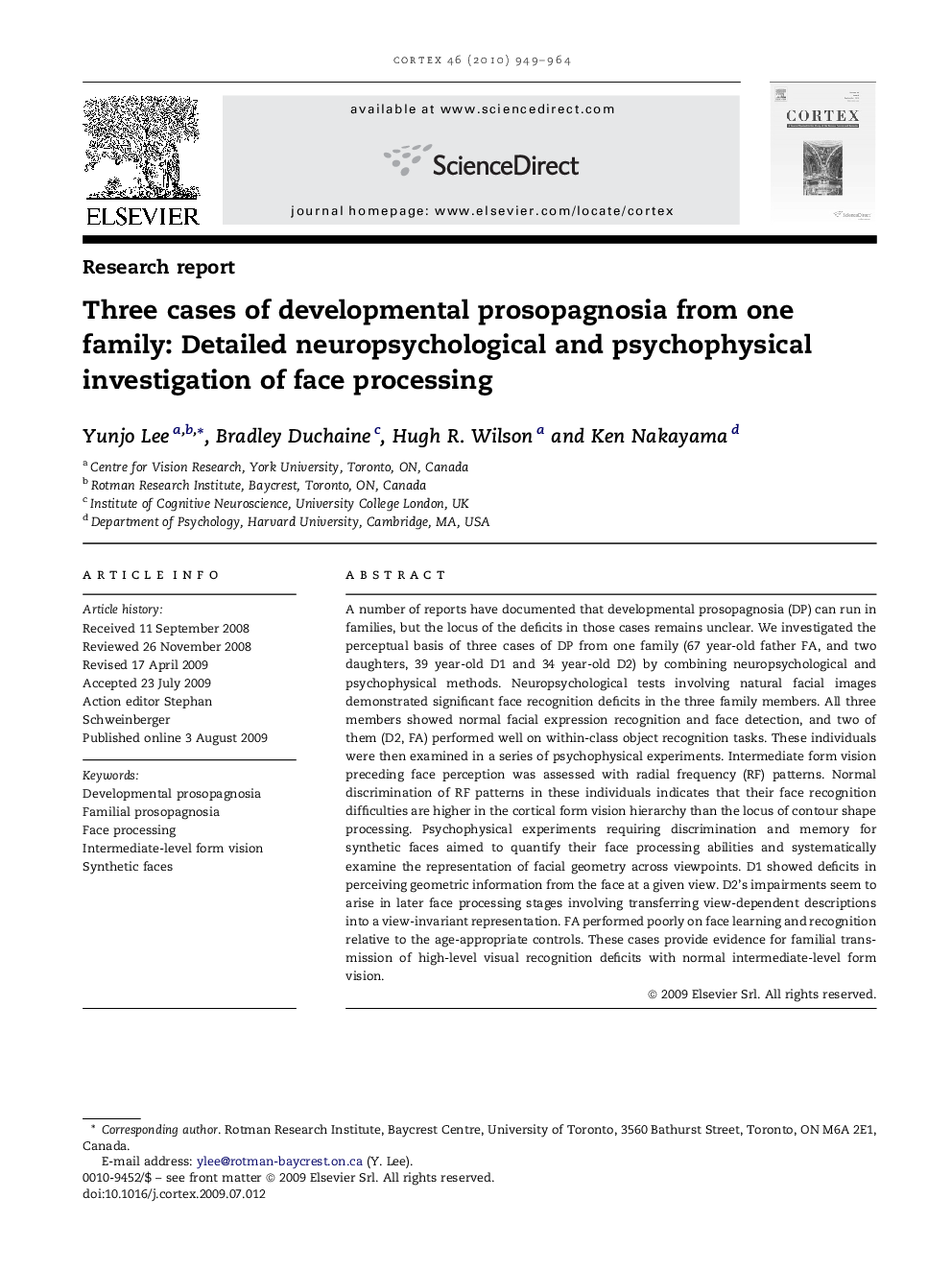| Article ID | Journal | Published Year | Pages | File Type |
|---|---|---|---|---|
| 942543 | Cortex | 2010 | 16 Pages |
A number of reports have documented that developmental prosopagnosia (DP) can run in families, but the locus of the deficits in those cases remains unclear. We investigated the perceptual basis of three cases of DP from one family (67 year-old father FA, and two daughters, 39 year-old D1 and 34 year-old D2) by combining neuropsychological and psychophysical methods. Neuropsychological tests involving natural facial images demonstrated significant face recognition deficits in the three family members. All three members showed normal facial expression recognition and face detection, and two of them (D2, FA) performed well on within-class object recognition tasks. These individuals were then examined in a series of psychophysical experiments. Intermediate form vision preceding face perception was assessed with radial frequency (RF) patterns. Normal discrimination of RF patterns in these individuals indicates that their face recognition difficulties are higher in the cortical form vision hierarchy than the locus of contour shape processing. Psychophysical experiments requiring discrimination and memory for synthetic faces aimed to quantify their face processing abilities and systematically examine the representation of facial geometry across viewpoints. D1 showed deficits in perceiving geometric information from the face at a given view. D2's impairments seem to arise in later face processing stages involving transferring view-dependent descriptions into a view-invariant representation. FA performed poorly on face learning and recognition relative to the age-appropriate controls. These cases provide evidence for familial transmission of high-level visual recognition deficits with normal intermediate-level form vision.
